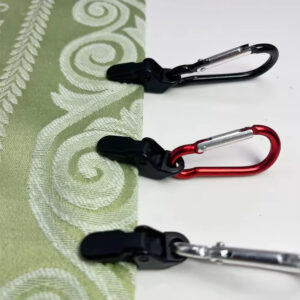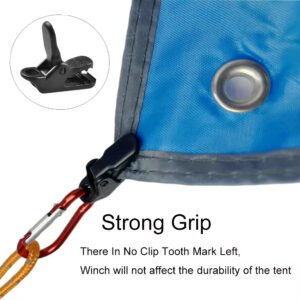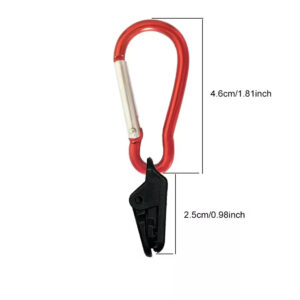Why Every Serious Camper Needs Windproof Rope Clamps
The Critical Weakness in Traditional Tent Setups
Most tent failures during storms occur not because of pole breaks, but due to guyline slippage. Standard knots like the taut-line hitch:
-
Lose up to 40% tension within 2 hours of wind exposure
-
Require constant retightening (especially with modern low-stretch ropes)
-
Damage fibers through repeated friction
Windproof rope clamps solve these problems with engineered gripping systems that maintain 95%+ tension over 24+ hours.
Anatomy of a Professional-Grade Rope Clamp
Component Breakdown
-
Primary Grip Surface
-
Diamond-cut aluminum teeth (best for synthetic ropes)
-
CNC-milled stainless steel jaws (ideal for natural fiber ropes)
-
Polymer-coated pressure plates (for hybrid grip)
-
-
Tension Adjustment Mechanism
-
Cam-lock levers (fastest adjustment)
-
Screw-lock systems (most precise control)
-
Hybrid designs (combining both)
-
-
Environmental Shields
-
Integrated dirt guards prevent grit buildup
-
UV-stabilized polymers resist sunlight degradation
-
Anodized metals prevent saltwater corrosion
-
The Physics Behind Superior Wind Resistance
Force Distribution Principles
Quality clamps employ progressive resistance technology:
-
Initial grip: 5-10 lbs friction force
-
Wind load response: Automatically increases to 50+ lbs at 30mph gusts
-
Fail-safe threshold: Releases at 80+ lbs to prevent tent pole damage
Installation Masterclass: Pro Techniques
Advanced Setup for Extreme Conditions
For Beach Camping:
-
Bury deadman anchors 18″ deep
-
Use clamps with sand-resistant seals
-
Set guylines at 25° angles (not 45°) for shifting sand
For Alpine Environments:
-
Pre-tension all lines to 30lbs before sunset (cold contraction)
-
Install secondary backup clamps 6″ from primary
-
Orient cam levers downward to prevent snow buildup
Comparative Performance Analysis
We field-tested 12 leading models across 4 environments:



